Tetra have been around in the aquarium industry since 1951 and are one of the largest aquarium product manufacturers around today.
And with them claiming the Whisper EX is designed with simplicity and convenience in mind. I was excited to run some tests and see how it stands up to competition.
To do so, I purchased the Tetra Whisper EX power filter, along with 4 with other HOB filters to test on my tanks, compare the results and review each one to find out just how good it really is.
Here are my results:
Review Overview For Tetra Whisper EX
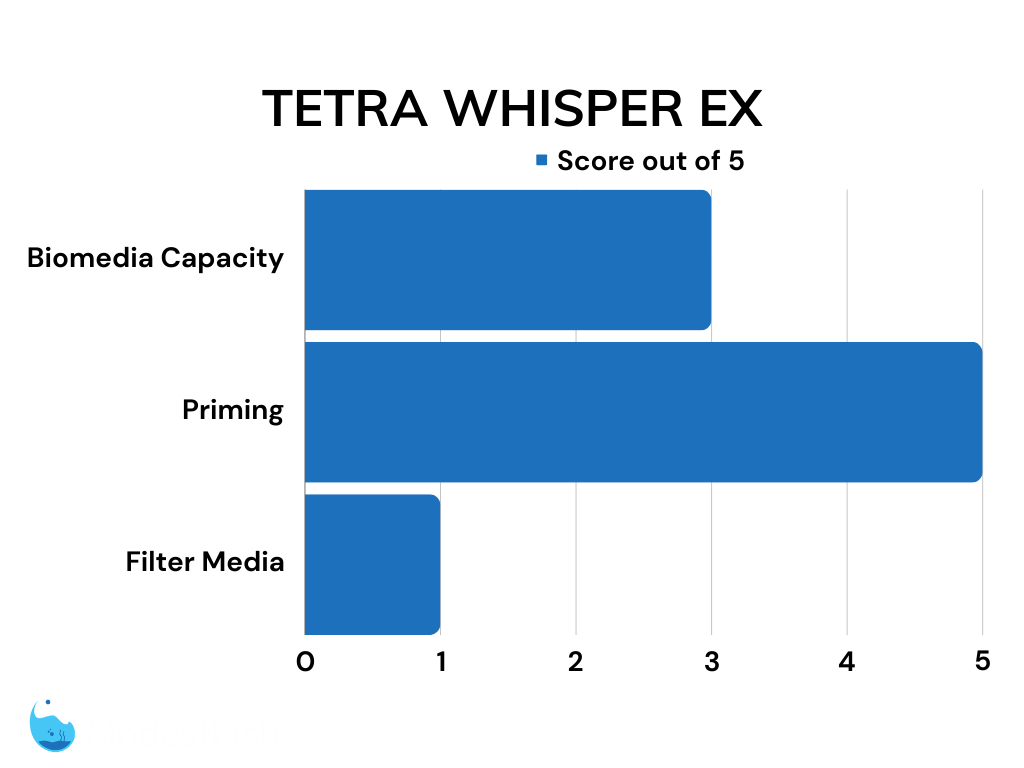
So, I’ve got to say right from the get go, I am not a huge fan of this filter. It’s cheaply made with plastic that bends really easily and the lift tube falls off at the slightest touch.
I have been running this model of filter for several months, and it’s just not up to scratch for me.
It doesn’t require priming (filling the reservoir with water to get it started). This is a nice feature, but it doesn’t make up for other shortcomings.
There is very limited space for biomedia and this filter relies on cartridges. I think that cartridges are low grade filter media that do more harm than good.
Even if you wanted to just add your own filter media to the reservoir, there’s not much room to do so since it’s designed for the slim cartridges.
Bottom line, this filter is better than nothing, but only just. I highly recommend going with a more high quality filter, like a Seachem Tidal or a Fluval C4.
| Preview | Product | |
|---|---|---|

|
Tetra Whisper EX 70 Filter For 45 To 70 Gallon aquariums, Silent Multi-Stage Filtration, WHITE | Buy on Amazon |

|
SeaChem – Large Aquarium Fish Tank Filter, Tidal 75 Gallon (300 Liters) by Sicce | Buy on Amazon |

|
Fluval C4 Power Filter, Fish Tank Filter for Aquariums up to 70 Gal. | Buy on Amazon |
Last update on 2024-04-26 / Commissions Earned / Images from Amazon Product Advertising API
How I Tested The Tetra Whisper EX
As part of a head-to-head challenge, we purchased five of the most popular hang-on-the-back filters so we could try them out and compare them in a real world setting.
We tested the following filters:
- Seachem Tidal 75
- Fluval C4
- Aquaclear 70
- Marineland Penguin
- Tetra Whisper EX 70
We unboxed each filter, took a good look at what was included, tested the GPH (gallons per hour) and set them up on my tanks so we could get a good feel for what it’s like to use them.
I also added in my experience, having used this filter for about 8 months on my 40 gallon (151 liter) angelfish tank.
GPH Testing
To test the GPH of all the different filters, we first filled a sturdy plastic container with water. One at a time, each filter was hung on the side of the tote, just like you would on an aquarium.
We got each one primed and running at full speed.
Then we placed a 4 gallon (15 liter) container under the outflow. We timed how long it took the filters to fill up this container.
We tested each filter four times, two times with no media and two times with all of the provided filter media installed.
Then it was time to bust out the calculators.
To figure out the GPH, we first converted all of the times into seconds.
We added the two times from each category together (empty vs. full) and then divided that sum to get the average.
Then, each average was divided by four, this gave us the gallons per second.
Lastly, the number of gallons per second was divided into 3,600, the number of seconds in an hour, and that gave us the gallons per hour.
Here’s an example, if the two recorded times were 01:20 and 01:30.
That would be 80 and 90 seconds.
(80+90) ÷ 2 = 85 average time for 4 gallons in seconds
85 ÷ 4 = 21.25 gallons per second
3600 ÷ 21.25 = 169.41 gallons per hour
Here’s a comparison of all five heaters we tested:
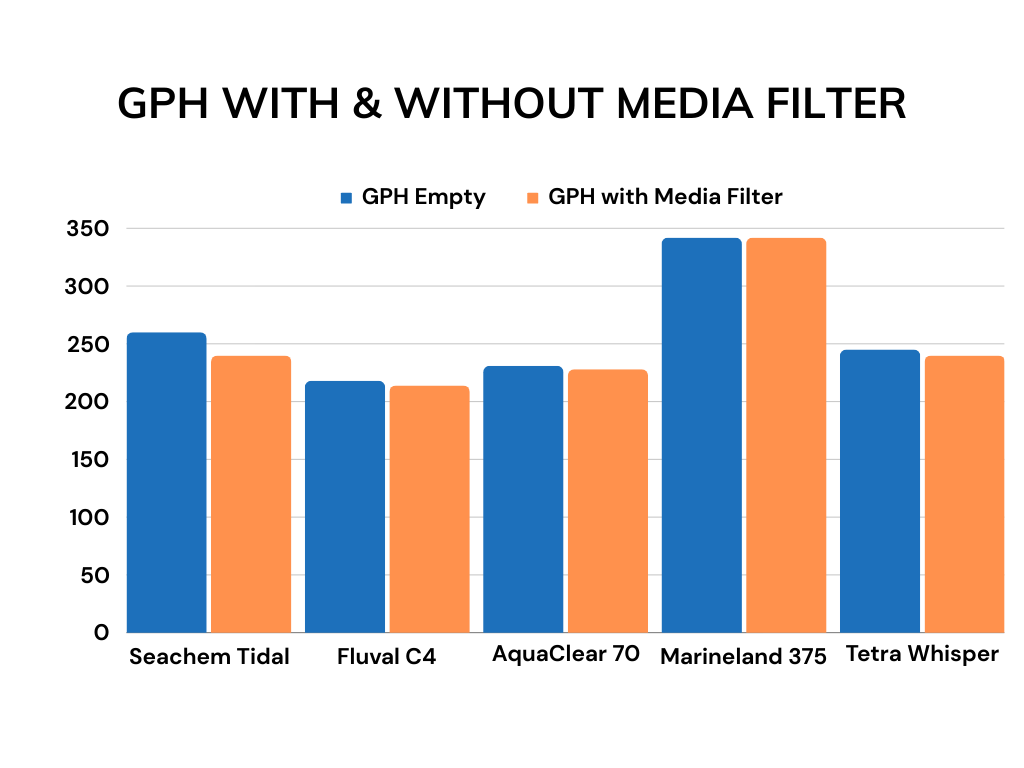
As you can see, the Tetra came in third overall when it comes to GPH. It put out 244 GPH empty and 242 GPH with all of the media installed.
So, definitely not terrible on this front, but also, not the leader.
But, there’s a lot more to consider than just GPH when you’re deciding on a filter.
A Quick Note About Why Filter Cartridges are Garbage
I just wanted to make sure I explained why I’m about to be a bit harsh when it comes to the media that this filter uses.
I really hate filter cartridges. I think they’re a rip off, in what is already a very expensive hobby, and they can do more harm than good.
The most important part of a filter is the beneficial bacteria that grows on filter media. These bacteria eat highly toxic compounds from fish waste and make them safe for fish.
For more information about this process, please see our comprehensive article about the Aquarium Nitrogen Cycle here.
Any beneficial bacteria that grow on the filter cartridges get thrown out each month when the cartridges get swapped out.
This lessens the number of beneficial bacteria in your tank, which can lead to ammonia spikes.
Filter companies will try to sell you on the idea that you have to swap out the cartridges because you need to replace the activated carbon inside the filter since it gets clogged up after a few weeks.
But you don’t actually need carbon in your filters at all. Many, many aquarists don’t use carbon in their filters unless they’re trying to remove medications from the water column after a round of treatment.
Carbon doesn’t remove wastes, like ammonia or nitrite, from the water. Only beneficial bacteria can do that.
So, you’re throwing away the stuff that you need, the beneficial bacteria, so you can swap out the carbon that you don’t need at all.
That’s why, in my opinion, cartridges are a big waste of money that can do more harm than good.
Feature Testing
We evaluated the following features of each filter:
- Biomedia capacity – is there substantial room for biomedia inside the reservoir?
- Priming – how difficult is it to prime this filter and get it pumping?
- Filter media – what is the quality of the filter media that is provided?
Tetra Whisper EX In-Depth Review
After testing the tetra whisper ex and comparing with similar hang-on-back filters, here’s my review.
What’s in the Box?
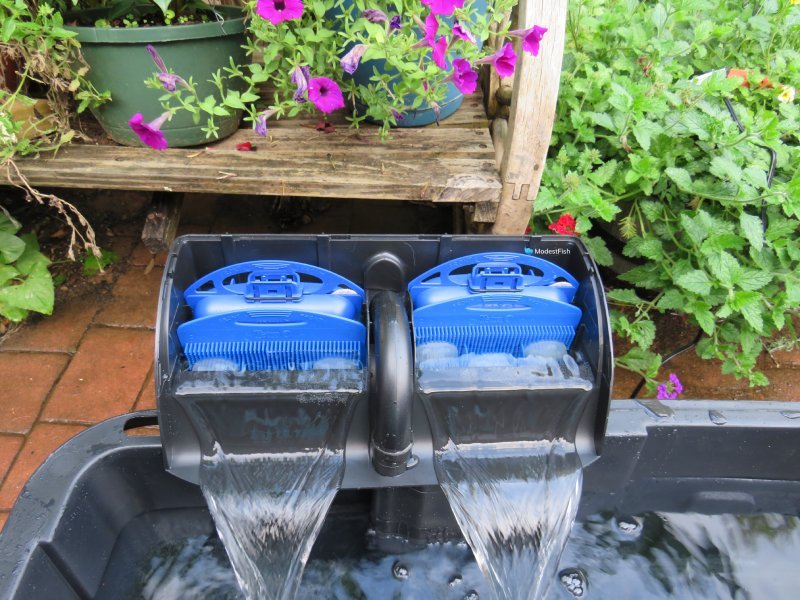
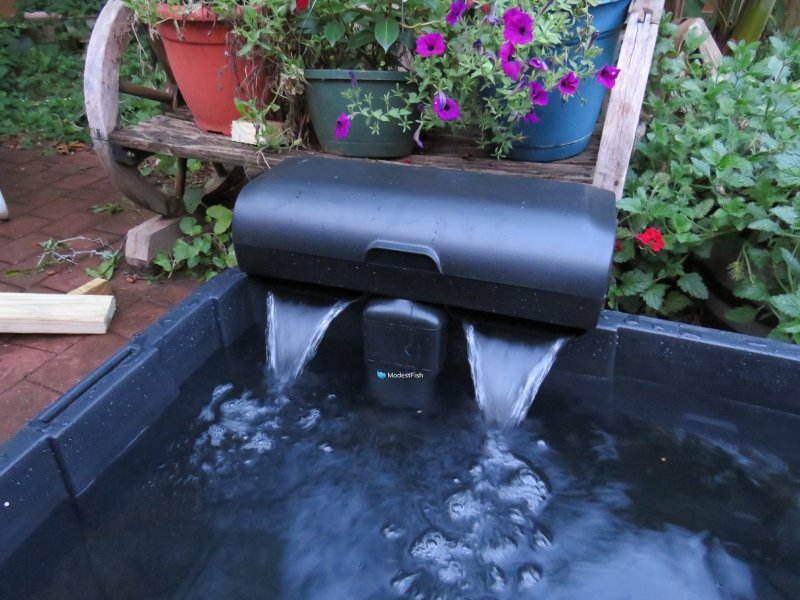
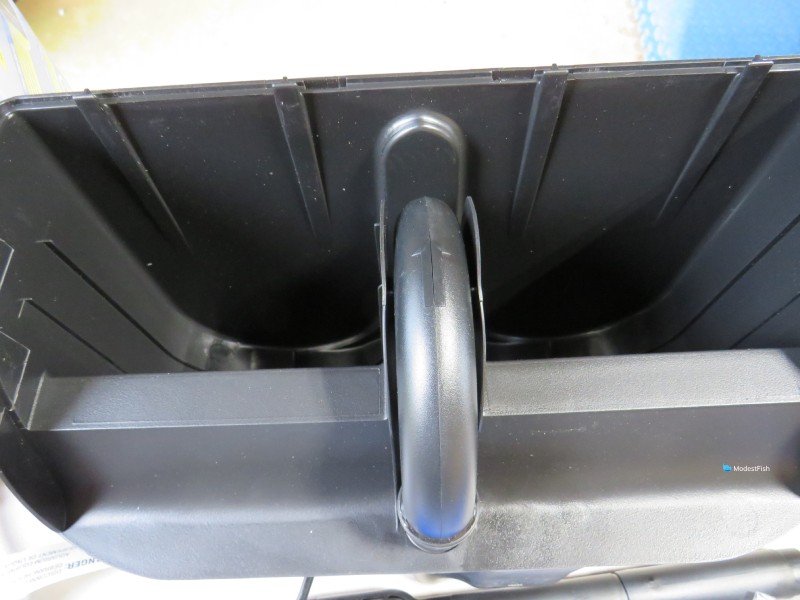
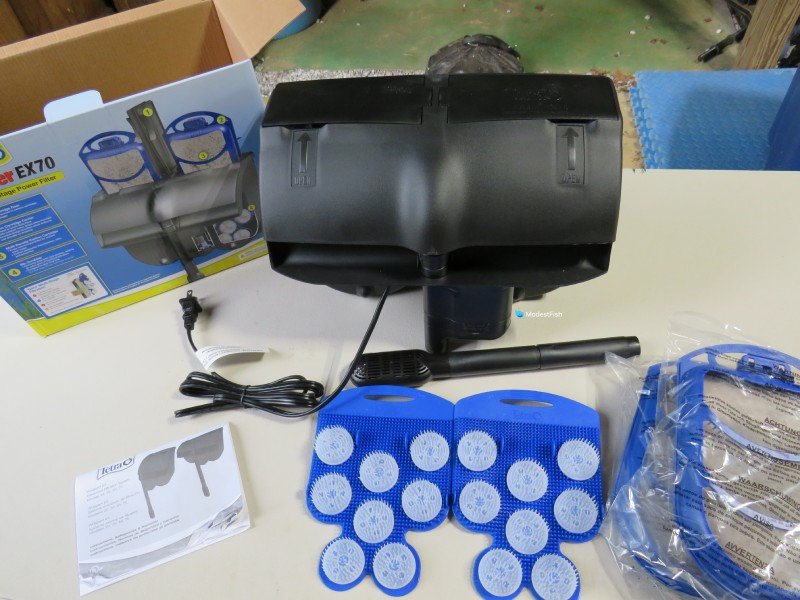
The contents of the box are fairly simple. There’s the filter itself, two biomedia inserts and two filter cartridges with activated carbon.
Let’s take a look at the features:
Biomedia Capacity
I do not think that this filter has anywhere near enough room for biomedia. There is very little room in the reservoir because it’s designed for slim little cartridges.
It comes with two inserts, called “Bio-Scrubbers,” that are meant to act as the permanent biomedia in the system. The Bio-Scrubbers look like plastic filter cartridges with rings of white plastic bristles.
I can say from experience that this biomedia does work in the sense that it will grow beneficial bacteria that can maintain a cycle in the aquarium.
However, I can also say from experience that it has very limited capacity. It’s easy to overwhelm the beneficial bacteria in the filter because of the limited surface area.
I had to ditch the cartridges so I had enough space to add on more biomedia. But, there’s not much space to add in bags of biomedia and/or reusable mechanical media because of the design of the reservoir.
Priming
I will say that this filter is super easy to prime. It has an internal motor, meaning the water pump is inside the aquarium instead of in the reservoir at the back of the filter.
All you have to do is plug it in and it will start pumping away.
And the internal motor also makes the filter very quiet.
Filter Media
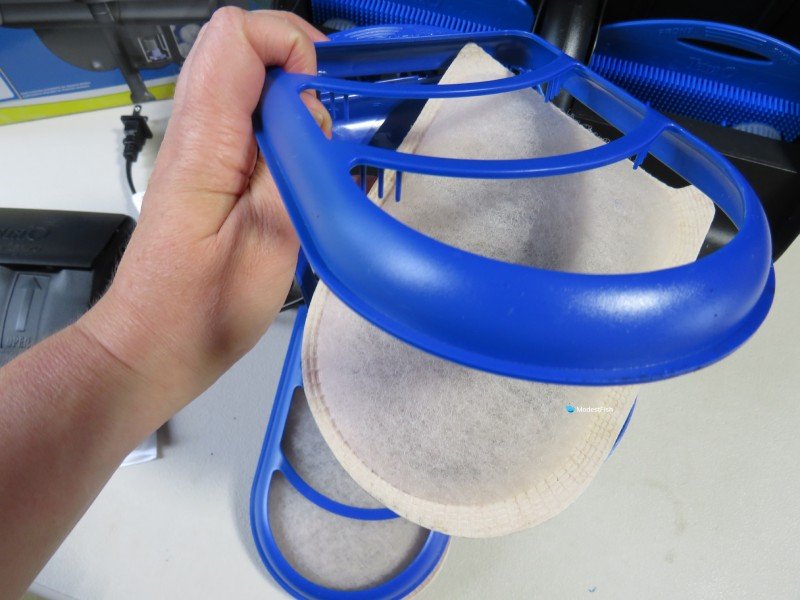
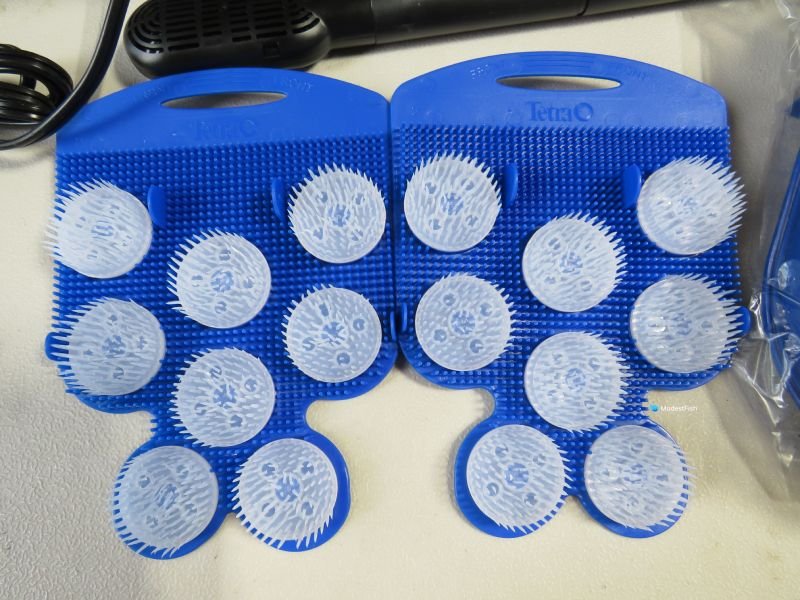
Huge surprise, I am not a big fan of the media that you get with this filter. I will say, the Bio-Scrubbers are OK, but they have very limited capacity.
And I really don’t like the filter cartridges. They are a low quality filter media, especially when you compare their cost of use to reusable forms of filter media, like sponge.
Overall Pros and Cons
Pros:
- Easy priming
- Quiet operation
Cons:
- Low quality filter media
- Not enough room for biomedia
- Cartridges are expensive
- Feels cheaply made
- Lift tube falls off all the time
Another thing about this filter that I’m not crazy about is the overall construction. The plastic feels very lightweight, not at all sturdy.
When you’re handling the filter outside of the tank, it’s very easy for the sides to bend in. I especially didn’t like having to dump the reservoir because the weight of the water is too much for the sides.
It’s easy for the sides to sort of buckle in which sloshes a bunch of water around. This can make maintenance a real pain.
And the lift tube falls off if you just look at it funny. It was super annoying the whole time it was in the tank. I did not enjoy having to fish it out of the tank several times a week.
How Does it Compare To Other HOB Filters?
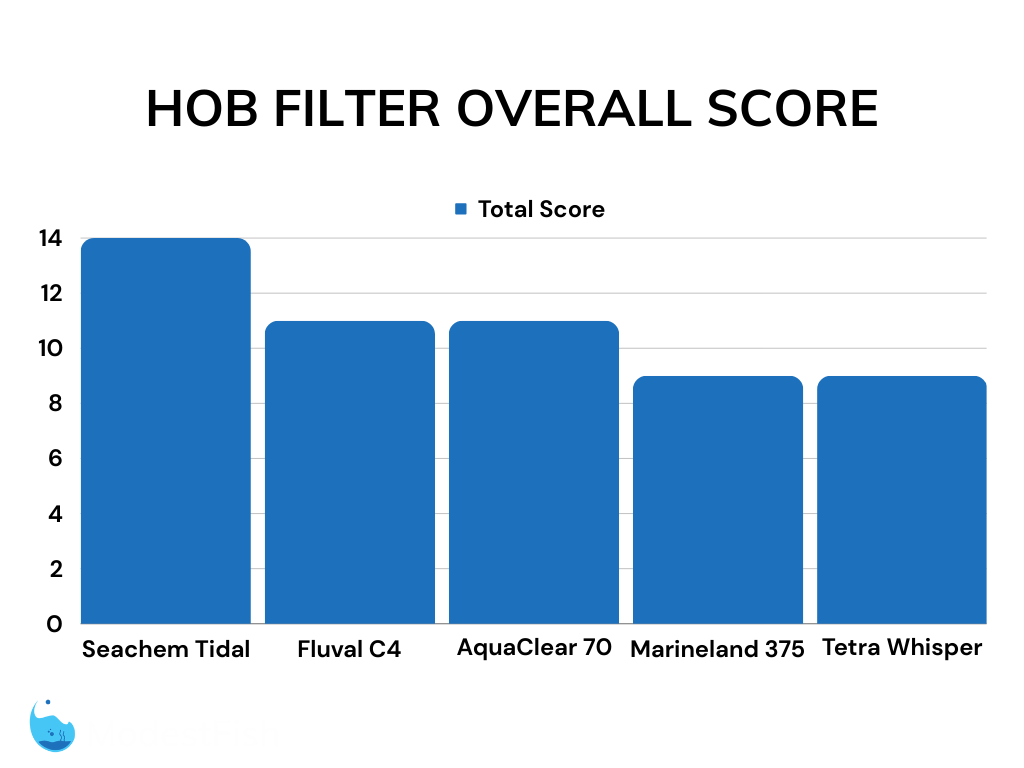
The Tetra Whisper EX did not fare well against its competitors. This filter came in dead last in our head-to-head challenge.
You can get the same easy priming from a Seachem Tidal 75 and you’ll get a ton more biomedia capacity to boot.
In fact, there is more room for biomedia in all of the other filters. The reservoir on the Tetra is very small because it’s designed to fit the slim cartridges inside.
So even if you want to skip the cartridges, there’s not much room to add in different kinds of media.
Also, none of the other filters had the same issues with the lift tube falling off so easily or the sides of the filter buckling because of thin plastic.
All four of the other filters are much sturdier and easier to handle for routine maintenance.
I would recommend getting any of the other four filters on the list over this one.
Final Thoughts
It’s no big surprise, I really don’t recommend this filter. The only thing I really like about this Tetra Filter is the easy priming.
But, it really comes up short when you look at things like the biomedia capacity and the quality of the included filter media.
After using one of these for several months, I really just wasn’t impressed, and I would recommend going with a Seachem Tidal 75, Fluval C4 or AquaClear 70 instead.
If you do decide to go with this filter, I would highly recommend ditching the cartridges and adding your own filter media.
I hope you find this article helpful.
I wish you and your fish the very best!
| Preview | Product | |
|---|---|---|

|
Tetra Whisper EX 70 Filter For 45 To 70 Gallon aquariums, Silent Multi-Stage Filtration, WHITE | Buy on Amazon |

|
SeaChem – Large Aquarium Fish Tank Filter, Tidal 75 Gallon (300 Liters) by Sicce | Buy on Amazon |

|
Fluval C4 Power Filter, Fish Tank Filter for Aquariums up to 70 Gal. | Buy on Amazon |
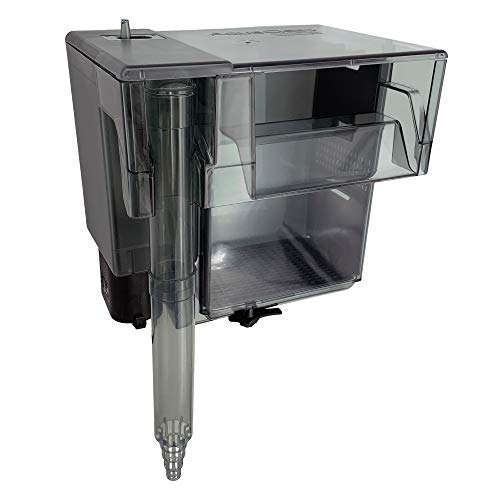
|
AquaClear 70 Power Filter, Fish Tank Filter for 40- to 70-Gallon Aquariums, Black | Buy on Amazon |
Last update on 2024-04-26 / Commissions Earned / Images from Amazon Product Advertising API

thank you i was going to buy this filter from chewy but after your review im going to buy the tidal filter